
Trip to Burgos, Spain, October 2016
This trip was for a EuroGA fly-in. On EuroGA we normally have two big fly-ins a year, in May and September. On these fly-ins we create a Telegram group and use that to coordinate everyone who has turned up so one can do other meet-ups, etc. This fly-in was one of the smaller ones.
This trip report is relatively brief because the flying was standard European IFR in the Eurocontrol system, with no significant weather, and I have already written extensively about it in other trip writeups here.
Here is a glossary for non-aviation readers.
I went with my son who, like me, does a lot of photography, and in Spain both the landscape and the old cities present a lot of opportunities for getting photos.
Pilot
FAA CPL/IR, EASA PPL/IR, ~2300hrs.
Aircraft
The aircraft is this 2002 TB20GT; one of the last made before production ended.
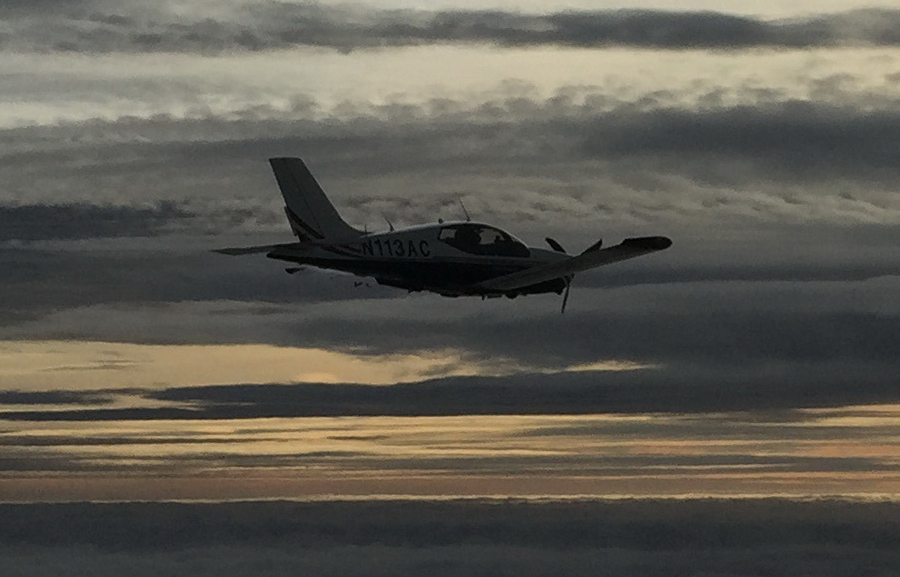
It is equipped for BRNAV (RNAV 5) and can fly ILS and GPS/LNAV approaches using the autopilot. This is sufficient for all practical European IFR flight. The cockpit is largely as delivered in 2002, with a Sandel EHSI installed on the LH side and with the RH side reworked with another Sandel EHSI and arranged to form a usable "pilot panel" so the aircraft can be flown from the RH side. There is no LPV approach capability but LPV is not yet (to me) operationally relevant in Europe especially if flying to/from the UK which normally needs an airport with Customs/Immigration. France is ahead of most countries in removing ILS approaches (from airports not served by airlines) and replacing them with LPV.
The aircraft has an operating ceiling of 20,000ft in ISA conditions. I have taken it to 21,000ft but in the fairly common summer conditions of e.g. ISA+15 it will reach 18,000ft at MTOW.
Routes
These were developed with the EuroGA Autorouter which was also used to file the flight plans. This facility is currently free. It does IFR flight plans only. A wiki on it is here. The only options for autorouting are the aforementioned, RocketRoute (which is expensive), and a free PC tool FlightPlanPro which was developed by one of the RocketRoute people before RR came along. As a backup to the Autorouter, I use FlightPlanPro to develop the route and then EuroFPL to file it; this works fine but FlightPlanPro has no IOS or Android versions and thus needs a laptop (Mac or Windows), or it can be run (clumsily) over a remote desktop connection to such a machine and I have successfully done this with an Android tablet.
Some notes on IFR in Europe are here.
The outbound route was filed at FL100:
N0152F100 DRAKE DCT OSPOL M189 NEVIL DCT IBUMO DCT BULOX DCT ARDOD DCT RALIX DCT MANAK DCT ROYAN DCT TEMPU DCT BRS DCT SIGOS DCT URUNA R10 SSN B190 DGO DGO1H
570nm as filed
526nm GC
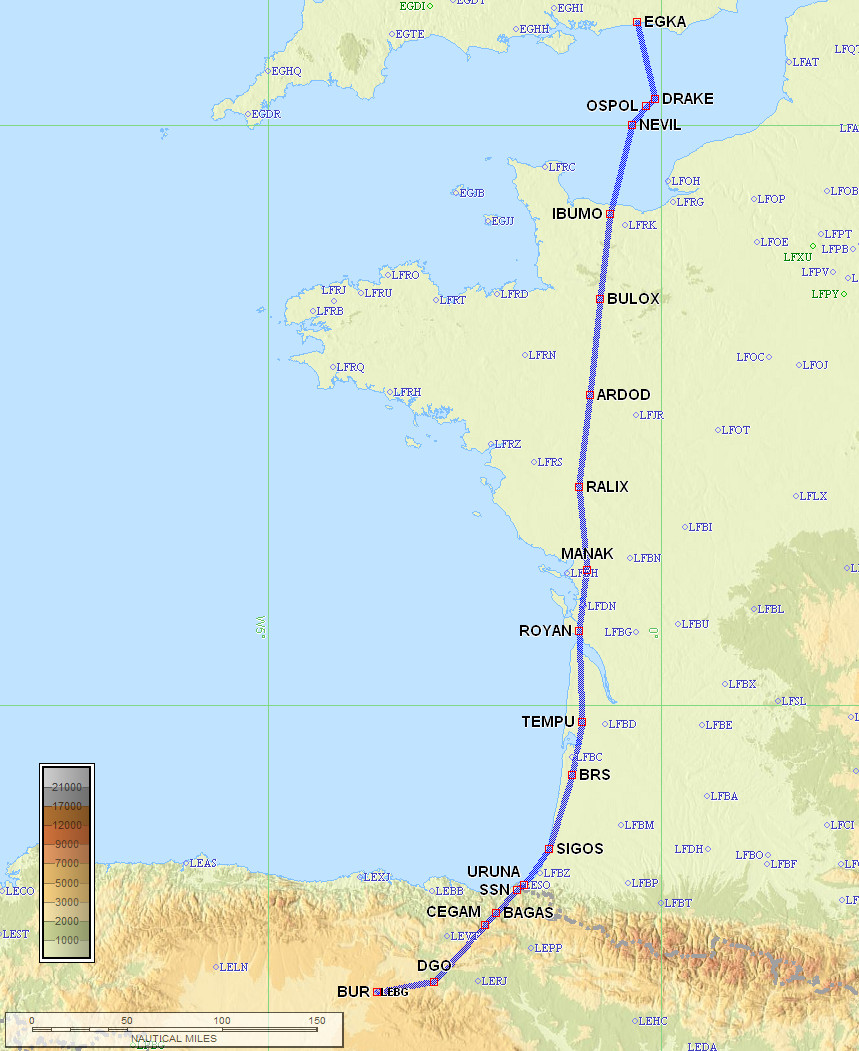
The return route was almost identical to the outbound route, and was also filed at FL100, with a drop to FL080 for obscure routing reasons at the end (these altitude steps are never actually flown):
N0152F100 DGO1R DGO B190 SSN R10 URUNA DCT SIGOS DCT BRS DCT TEMPU DCT ROYAN DCT MANAK DCT RALIX DCT ARDOD DCT BULOX DCT IBUMO/N0150F080 DCT NEVIL DCT DRAKE
570nm as filed
526nm GC
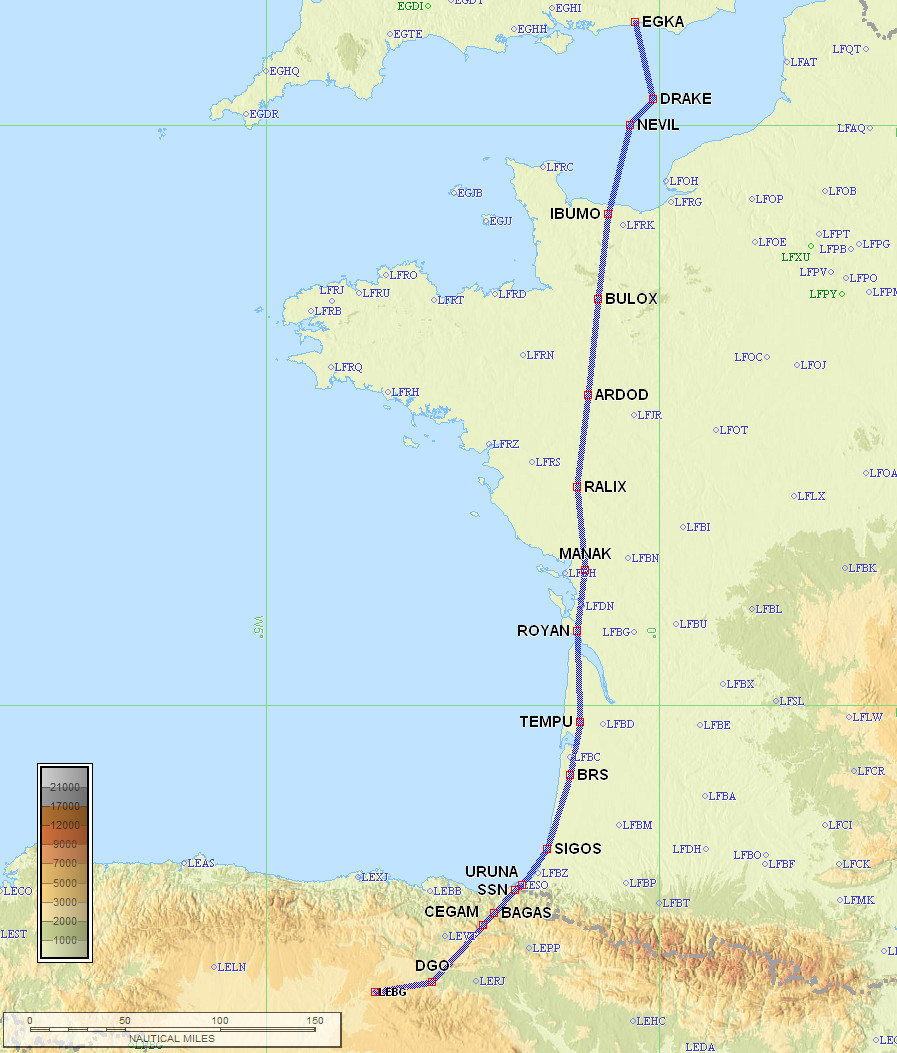
Airport PNR/PPR
LEBG was reported by a Spanish pilot on EuroGA as really straightforward. Small and empty terminal, very little traffic, low fees, no handling, and no PNR requirement both in the AIP and in reality. Taxi to Burgos centre was reported around 20€ and 15 minutes.
Spanish airports almost never respond to any communications in English, and
are only marginally more likely to respond to communications in Spanish ![]() .
So, the procedure is to follow the AIP (which for Spain is fairly accurate),
transmit any required notices, and just fly.
.
So, the procedure is to follow the AIP (which for Spain is fairly accurate),
transmit any required notices, and just fly.
Accommodation
With GA travel, there is no short-notice cost penalty so you can stay at home until the destination weather is good. The short-notice hotel issue can be tricky but AirB&B and Booking.com can be very useful and are widely used by pilots.
Booking.com is mostly normal hotels although many apartments appear on it also, hence it tends to be "hotel prices". In fact I use Booking.com as the standard way to look for hotels. It is generally better than AirB&B for short-notice trips because you get a guaranteed booking right away whereas with AirB&B you "request" the apartment, and many AirB&B hosts play silly games and take up to 24hrs (the max allowed time) to respond, presumably in the hope of getting a longer-duration booking. Many hosts simply don't bother to reply, and this gets much worse during the busy season. Fortunately you can cancel your request if you don't hear back within say a few hours. The other problem with AirB&B is that you get every "broom cupboard" on it, so one should not go too downmarket... in one €40/night apartment we had sewage coming up through the floor! So, when looking for an apartment for several people, I normally look at apartments priced around the cost of a single hotel room - say €100/night. However, if you have a few days to play with, AirB&B is usually much better value for money; in most cases one can get a whole 2- or 3-bedroom apartment for the cost of the €100 hotel room. One issue with Booking.com is that most of the establishments offer only 1 room on it (to make it look like they are nearly fully booked, to scare people into booking something fast) which can make it impossible to book for a group; this is obviously solved by googling for the hotel and contacting it directly. Normally the hotels prefer that anyway because Booking.com takes a cut of at least 15%. But occassionally one finds a lower price on Booking.com.
We got an excellent AirB&B apartment in the town, on Calle de Santander,
for about €300 for 3 nights. It was large, with 2 bedrooms and loads of
room. As is often the case with AirB&B apartments in cities, people actually
live there but they move out for the duration of the booking! This is a somewhat
bizzare practice; the people leave all their personal photos etc on the walls
but lock up the more valuable stuff into wardrobes. Of course we did not trash
the place but it must happen occassionally, so these property owners are cautious
in their procedures, often not confirming the booking quickly, often declining
it without a reason, and you don't get the full address until you turn up at
some prearranged location and someone walks up to you, hands you the key and
takes you to the apartment. Presumably if this person thought you look obvious
dodgy they would walk away and you would never know what happened. Of course
the other reason for this "secrecy" is that most AirB&B hosts
do not declare it for tax ![]() .
.
Shoreham - Burgos
The weather was as good as one could hope for:
MSLP: 0600 1200
1800
IR Sferics Radar
Wind Forecast TAFs/METARs.
I can get the weather while airborne, using either a Thuraya satellite phone connection (maybe 90% reliable) or a normal smartphone and its intermittent 3G/4G connectivity (maybe 50% reliable over a flight of several hours) and in this case there were ample diversion options all the way down the French coast and a few more in Spain.
Return weather was good too - +2 days +3 days +3 days winds
The whole flight was in VMC, with some of it above cloud cover whose top was around 7000ft. This is typical high pressure autumn/winter weather:
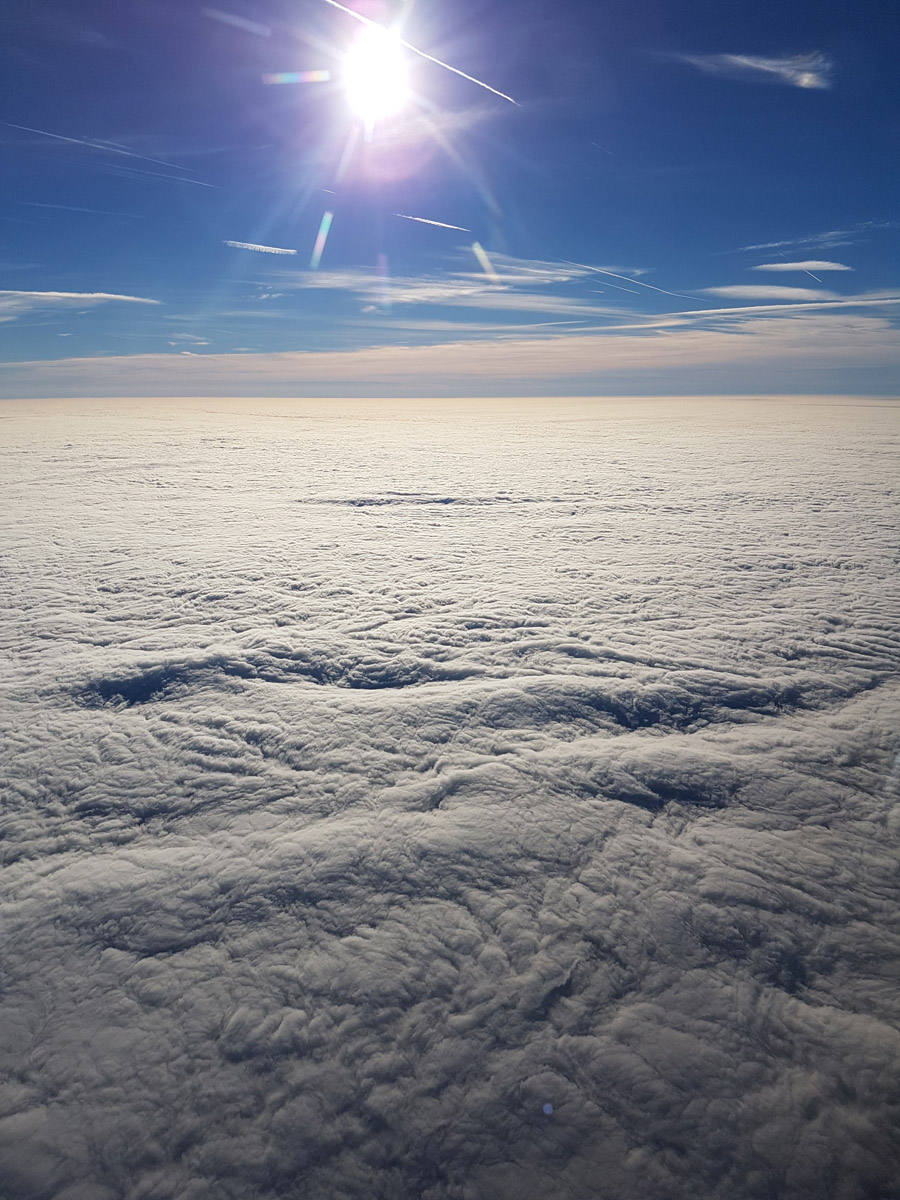
La Rochelle and Isle de Re
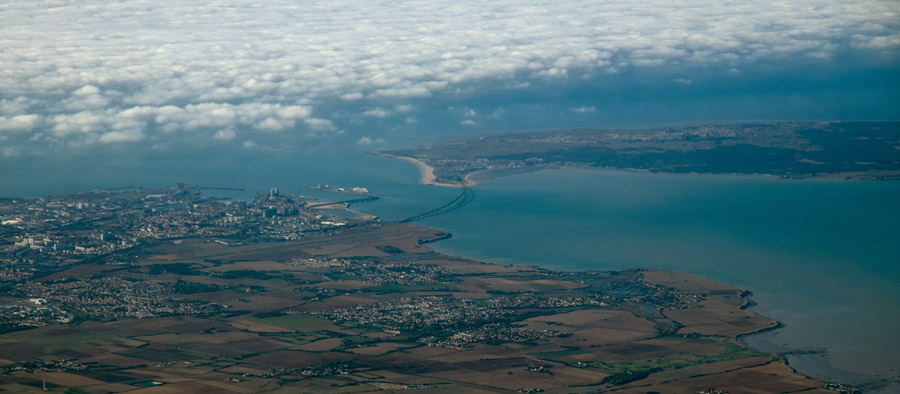
Saint Jean de Luz, near Biarritz
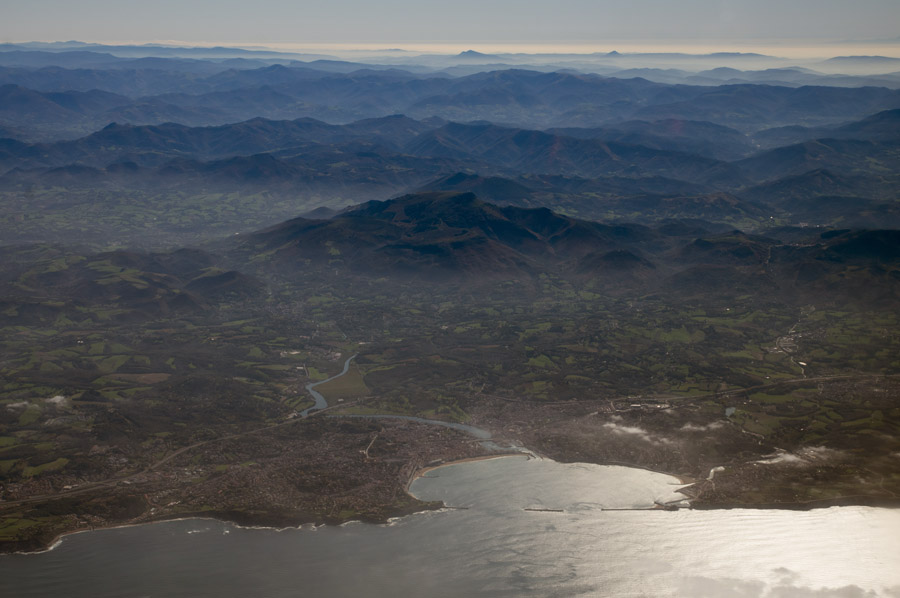
The Pyrenees in mist
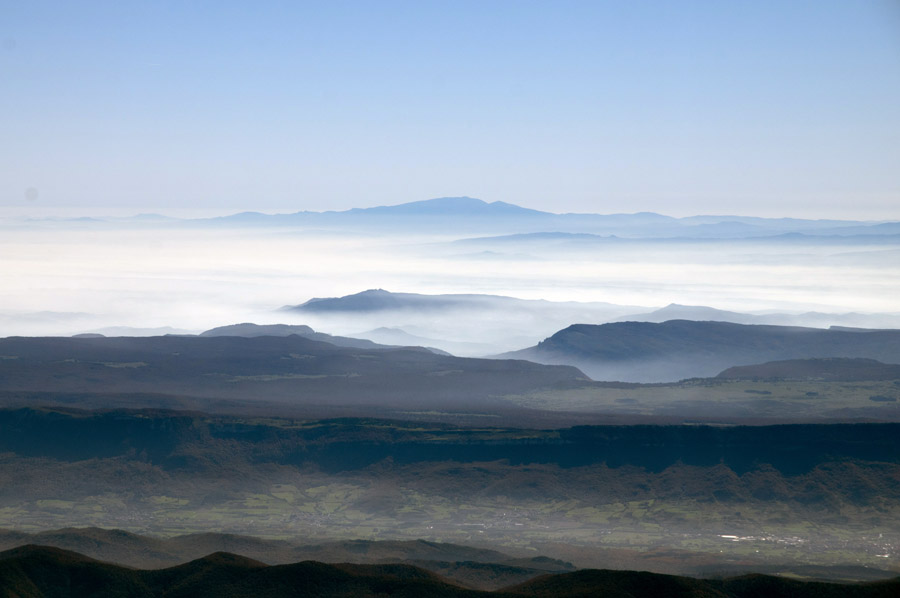
Final approach to Burgos
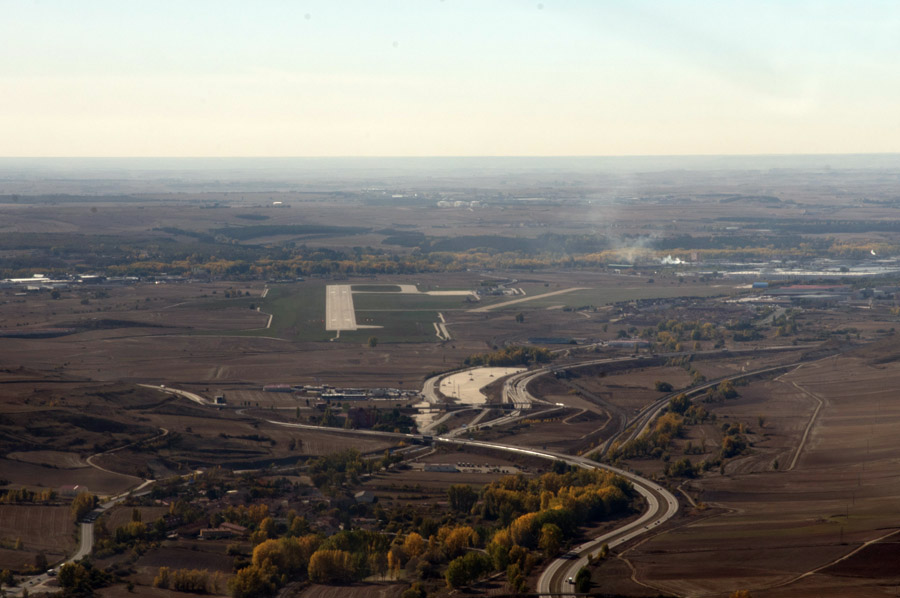
Very shortly before departure, a Spanish pilot contacted Burgos airport and was told they have run out of avgas and won't have more than a few hundred litres! So, the first one to arrive would have a chance of getting filled up, and the others would have to stop en-route. Oh well... they must have known for long enough but probably (a) they are disorganised and (b) there isn't much GA activity in Spain, away from a small number of busy airports. This resulted in some more cancellations in our group...
I was the first to arrive and got filled up. But there was another problem: the pump had a broken meter! I told them I have an accurate fuel totaliser and can tell them within 1% of what will have to go into the tanks but, no, they insisted on filling up a long sequence of metal measuring buckets of a known volume and pouring them into the aircraft via a strainer. This was really 3rd World stuff, but at least I would have full tanks and one less thing to worry about for the return flight. They were very nice about it, and I believe one of the guys below is the airport manager! With about 20 buckets, it did take about 2 hours to fill up, however...
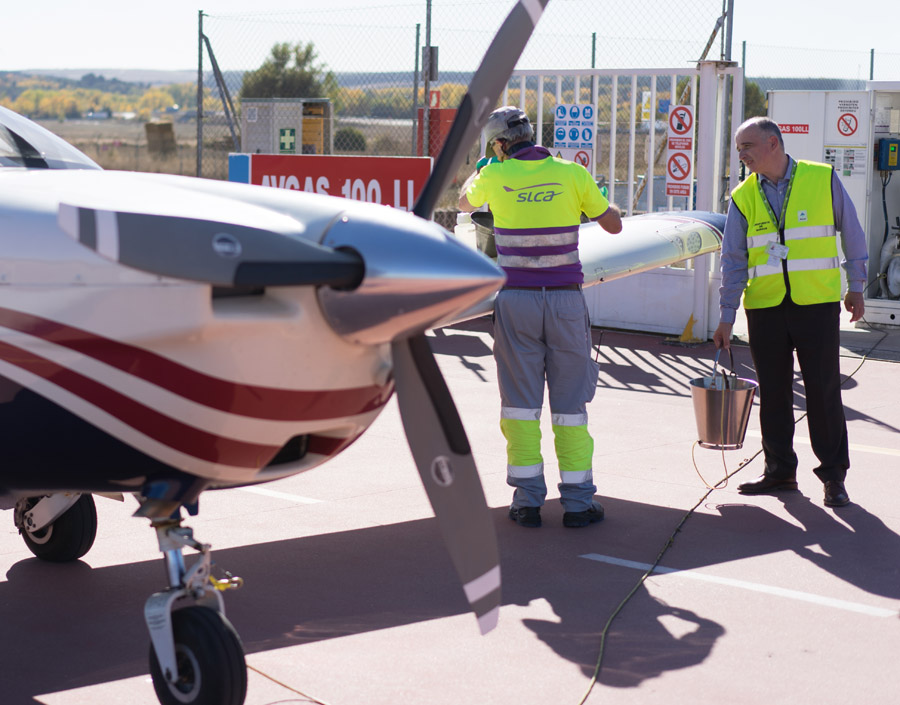
In common with many Spanish airports, the airport building was big but empty. There is no little or commercial traffic...
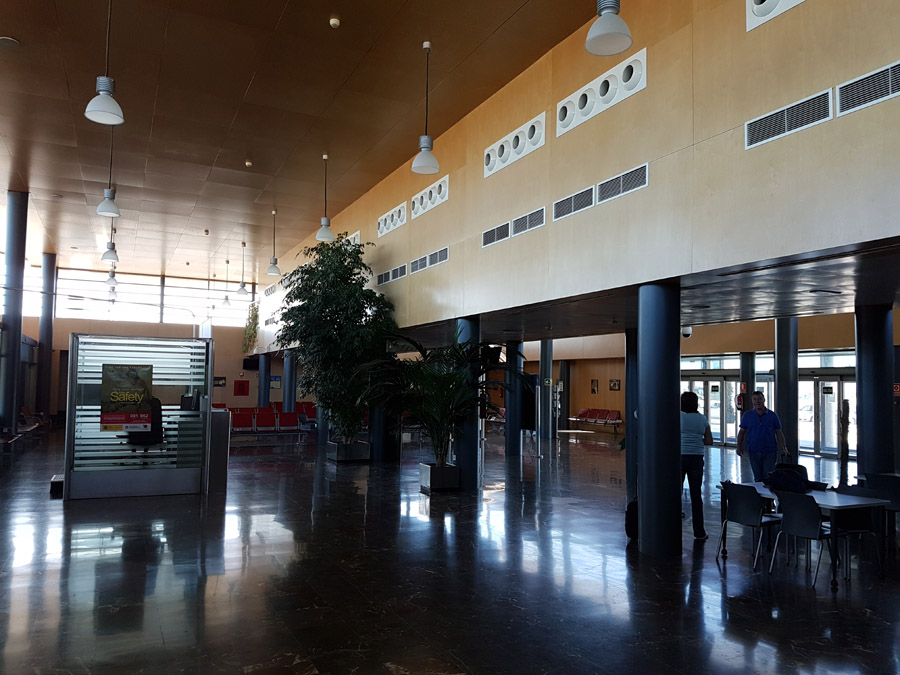
Burgos
Despite the hassles with fuel, we had a great group turn up, including one pilot in a TBM930.
The city is definitely scenic, and has enough for a couple of days. Beyond that one might want to do some day trips outside. A view from the castle:
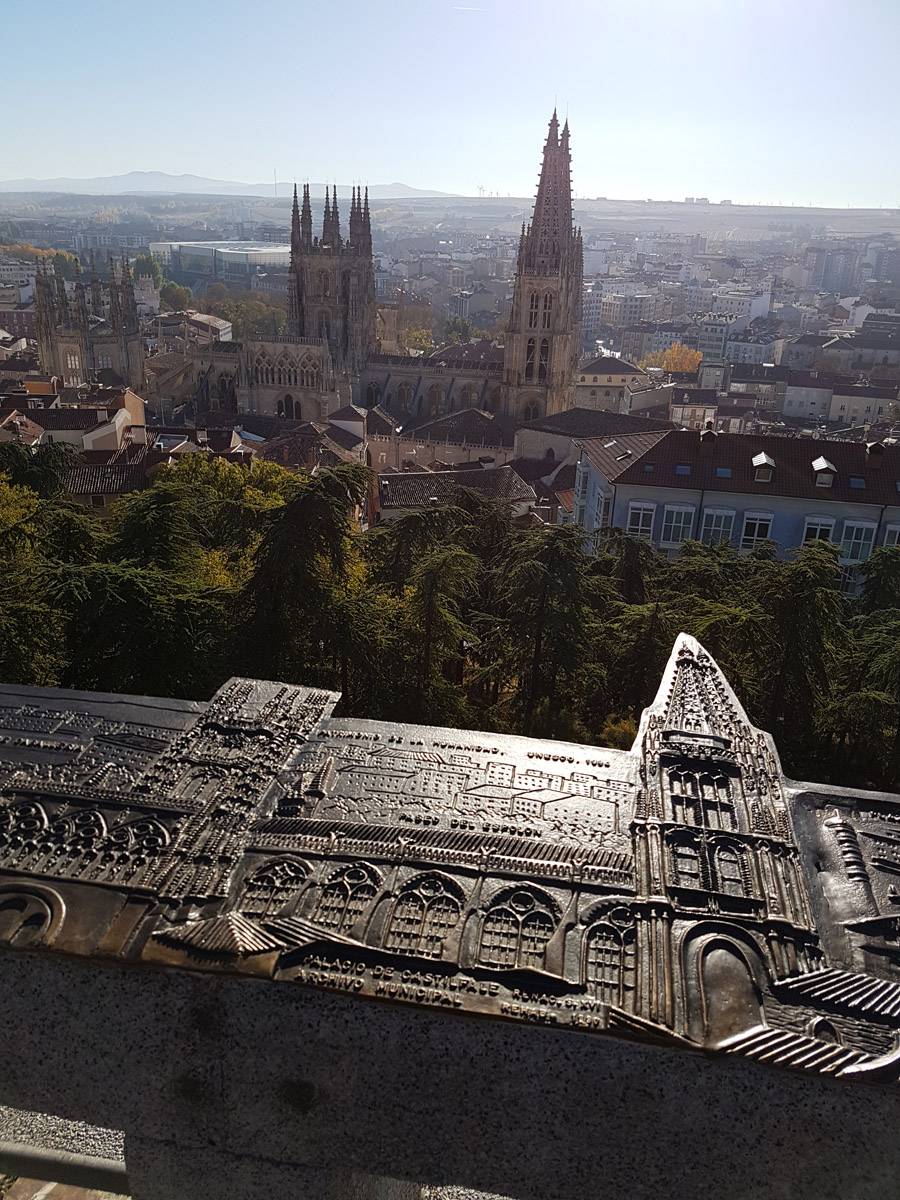
The river:
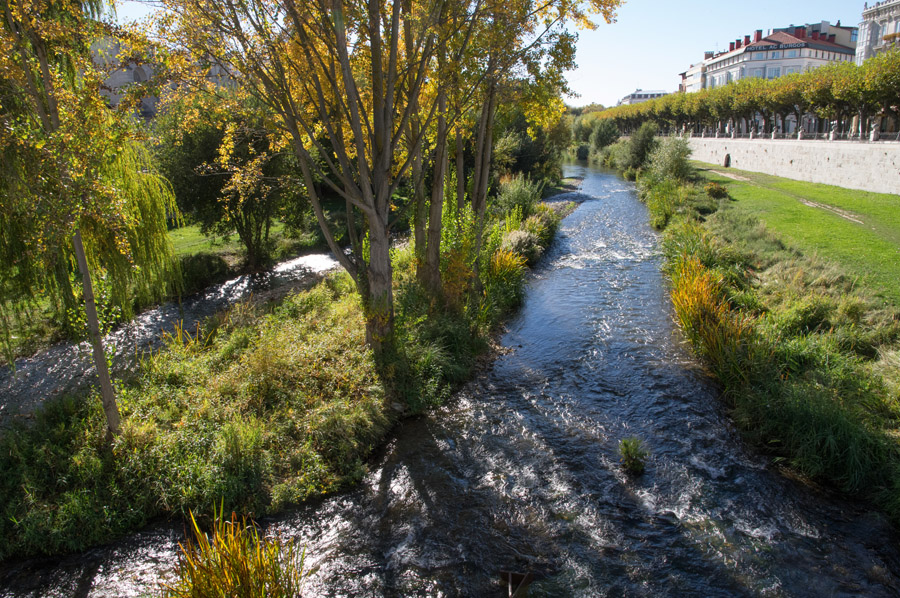
Everybody is out in the evenings, as is usual in southern Europe
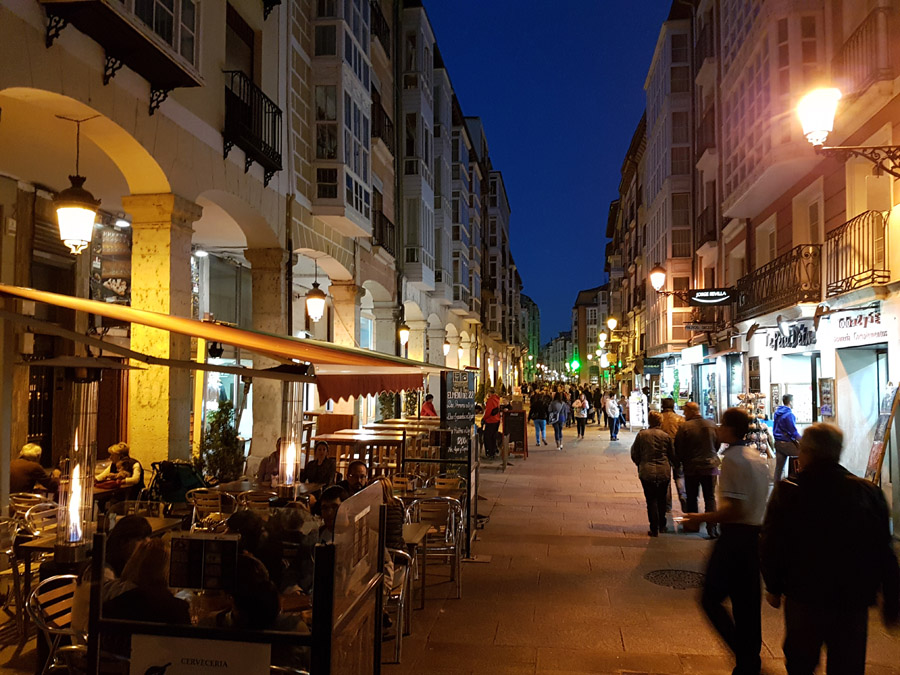
Very deep blue sky – this is ex-DSLR and not photoshopped
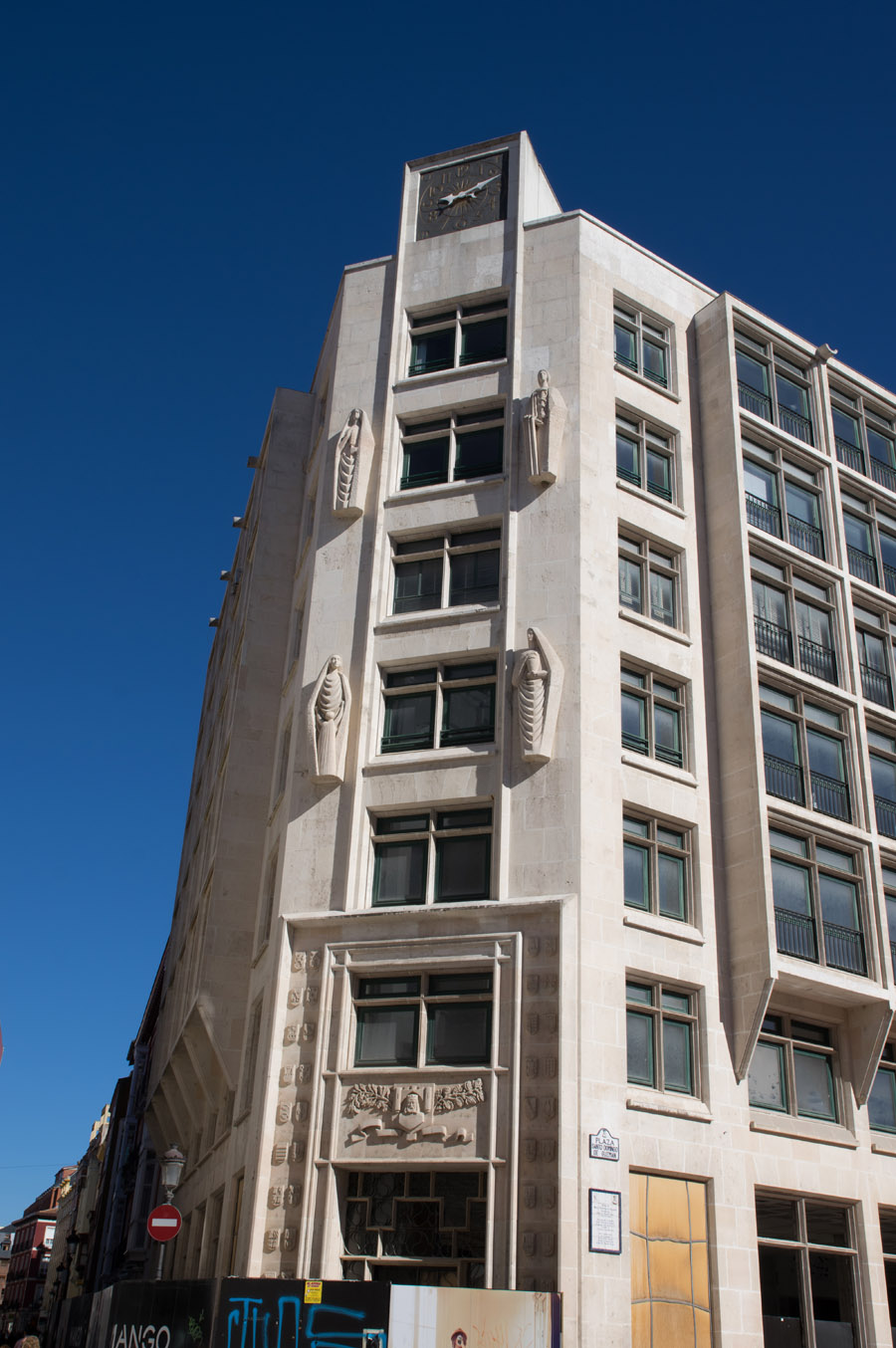
There were a number of these statues around; some excellent and life-like
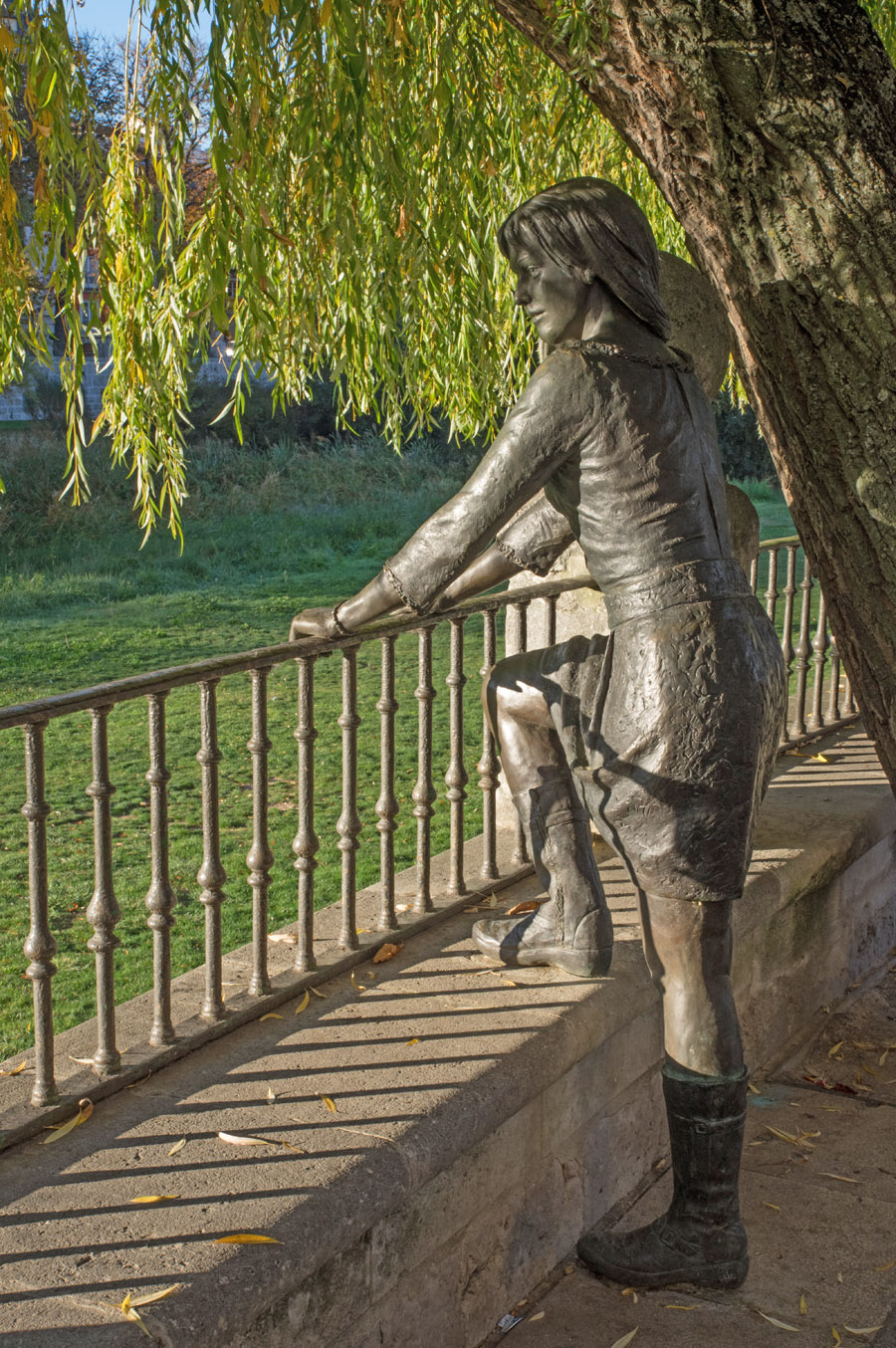
Inside the cathedral… various forms of christian suffering and torture
depicted in accordance with standard practice ![]()
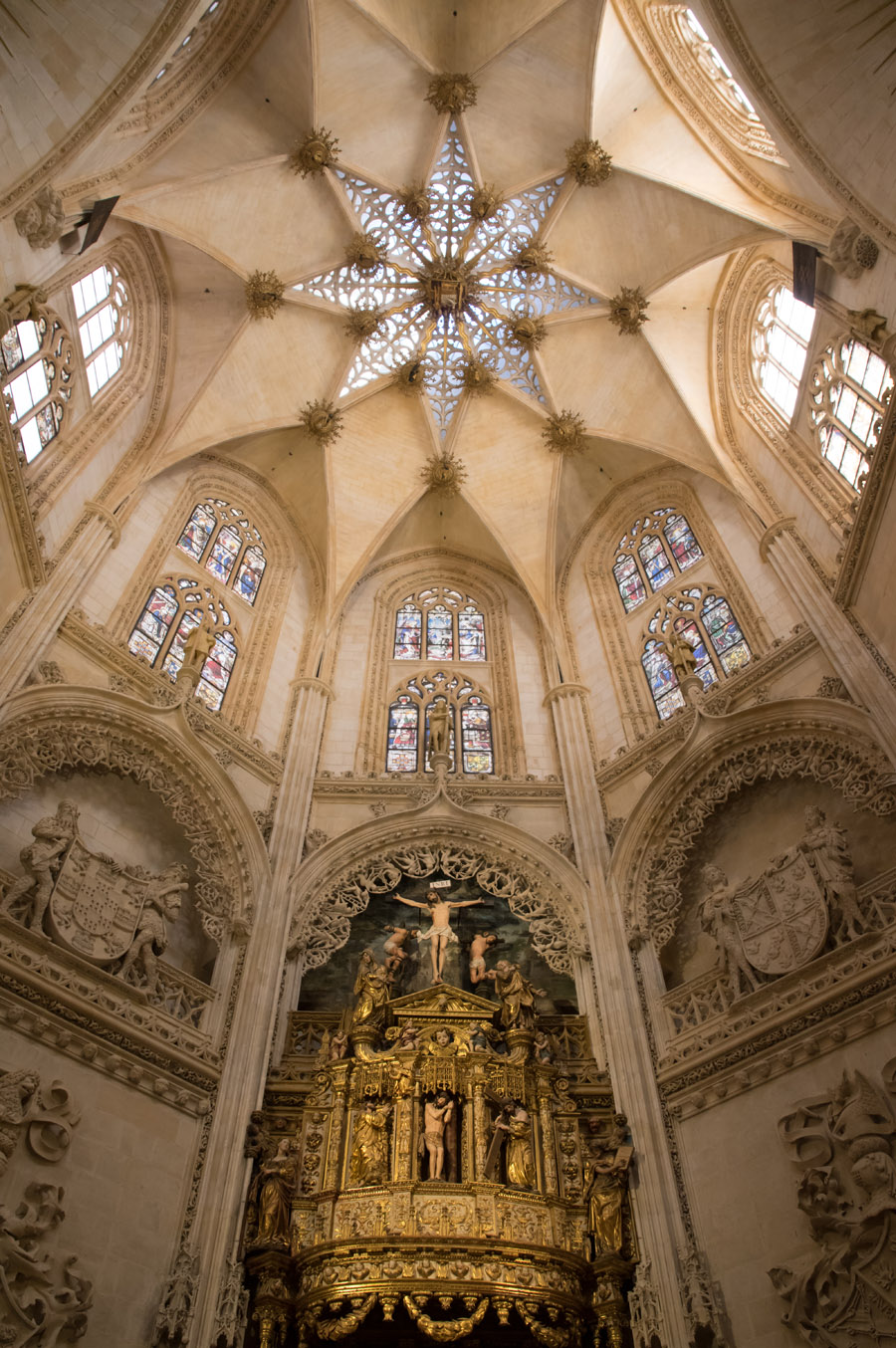
However, the cathedral was nothing like the one at Salamanca where you could go high up on the roof and get amazing views. This one was just a ground floor walkabout. Everything else was closed off.
Soup! We eventually found an excellent restaurant but there weren’t many around; mostly it was bars. Prices were low, presumably due to virtually zero tourism into this part of Spain. It is important to book a restaurant in advance.

The restaurant where we met up - Polison:
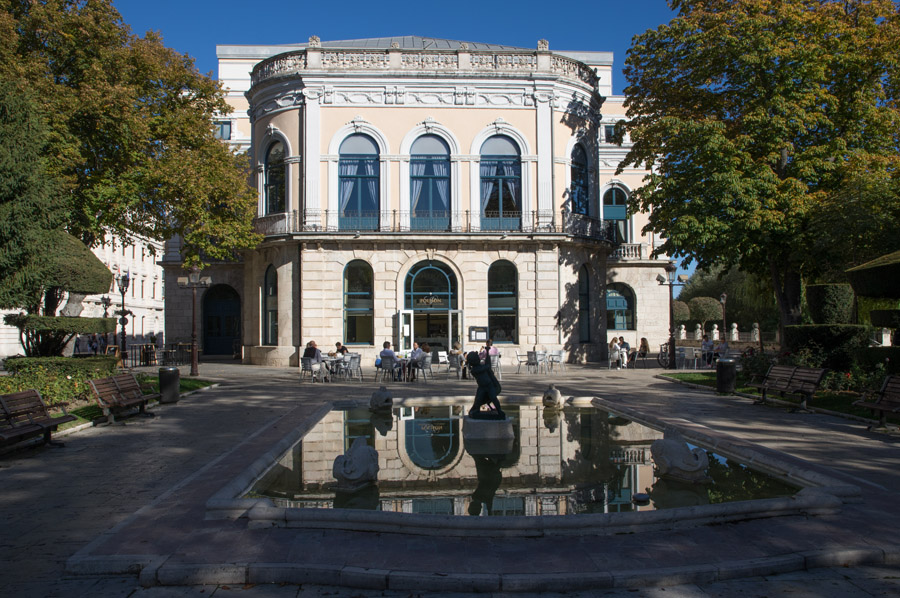
The museum of humanity – a spectacular building of a spectacular structural
design but housing little content and in every detail a testament to a former
astonishing ability of Spain to collect EU regional development grants ![]()
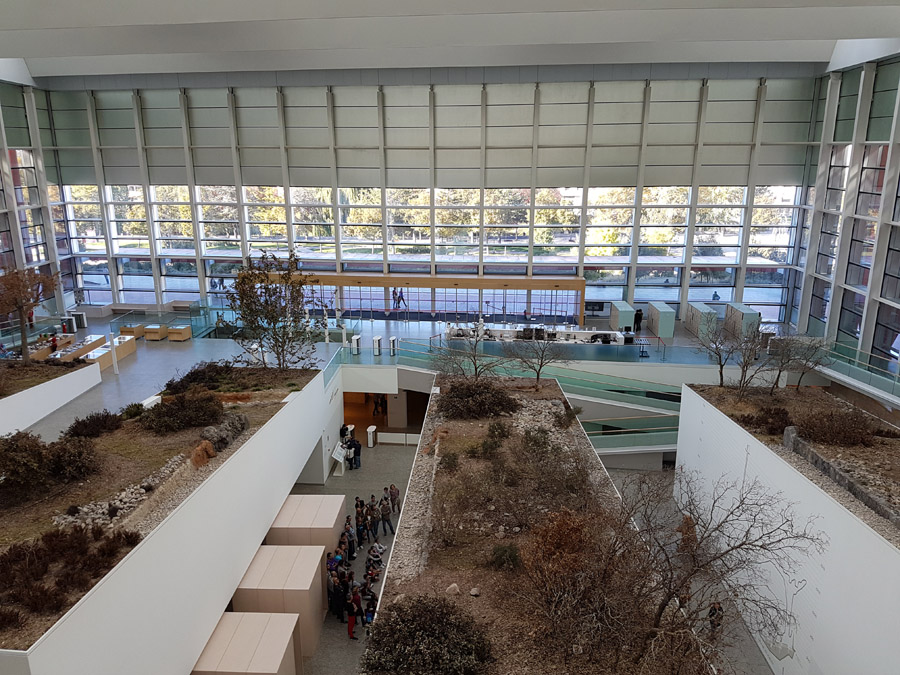
Carlos III (Charles III) was the King of Spain between 1759 and 1788
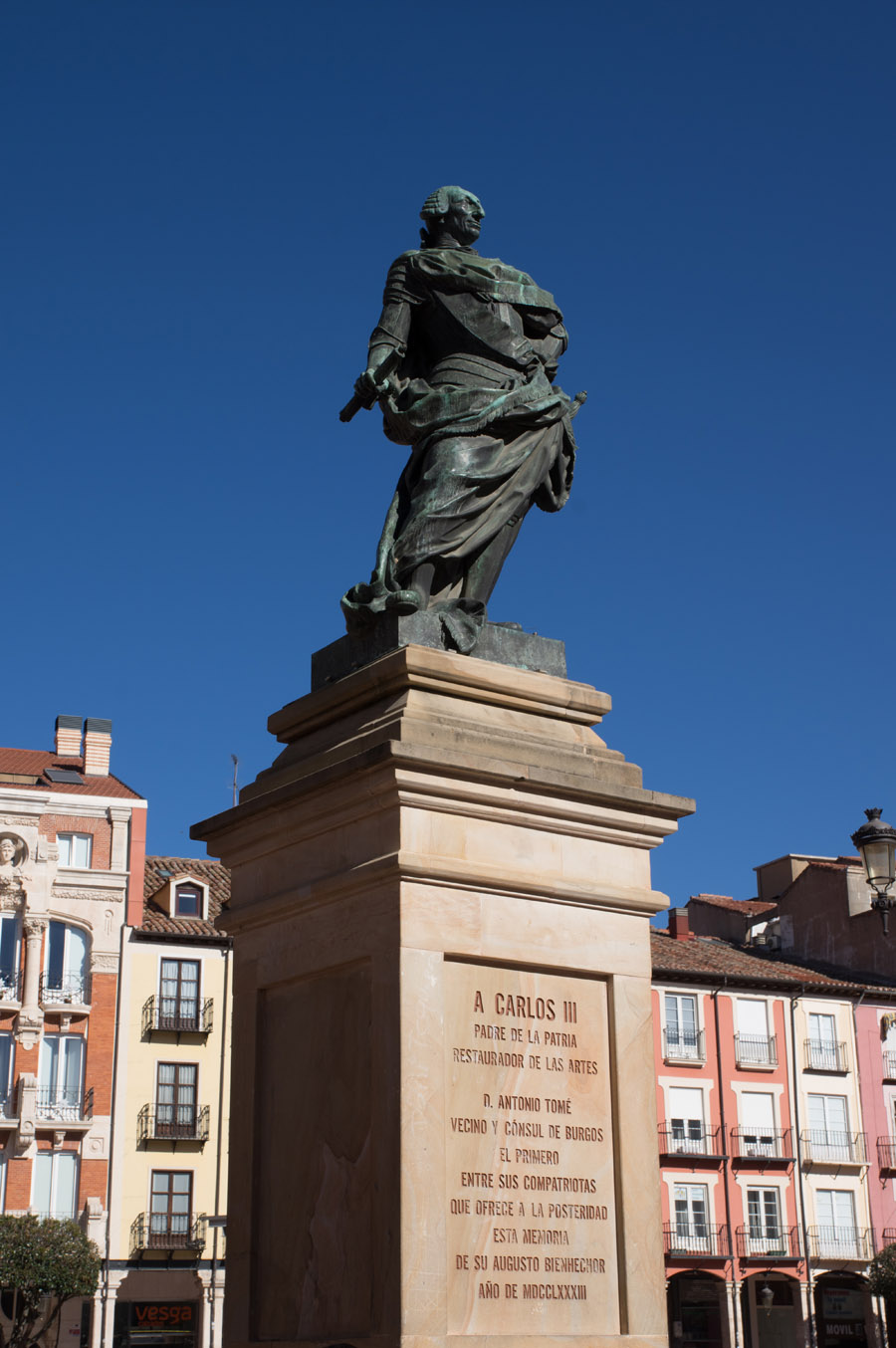
Burgos - Shoreham
The weather was again excellent: TAFS&METARs
The morning of departure was cold, with some ice still on the wings, but clear. Here we are parked next to the useless fuel station; the rest of the group were parked near the terminal building because they were not getting fuel
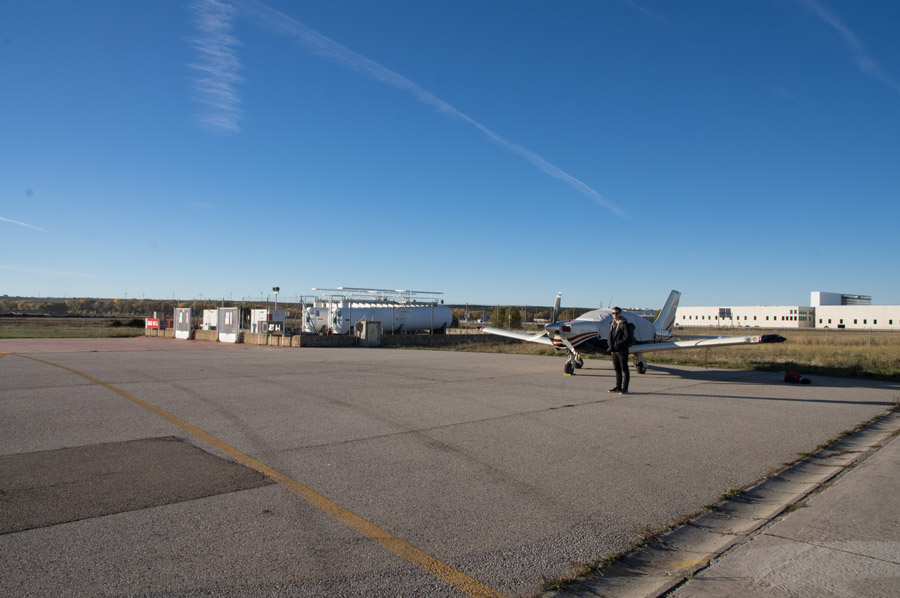
A spectacular long mountain ridge
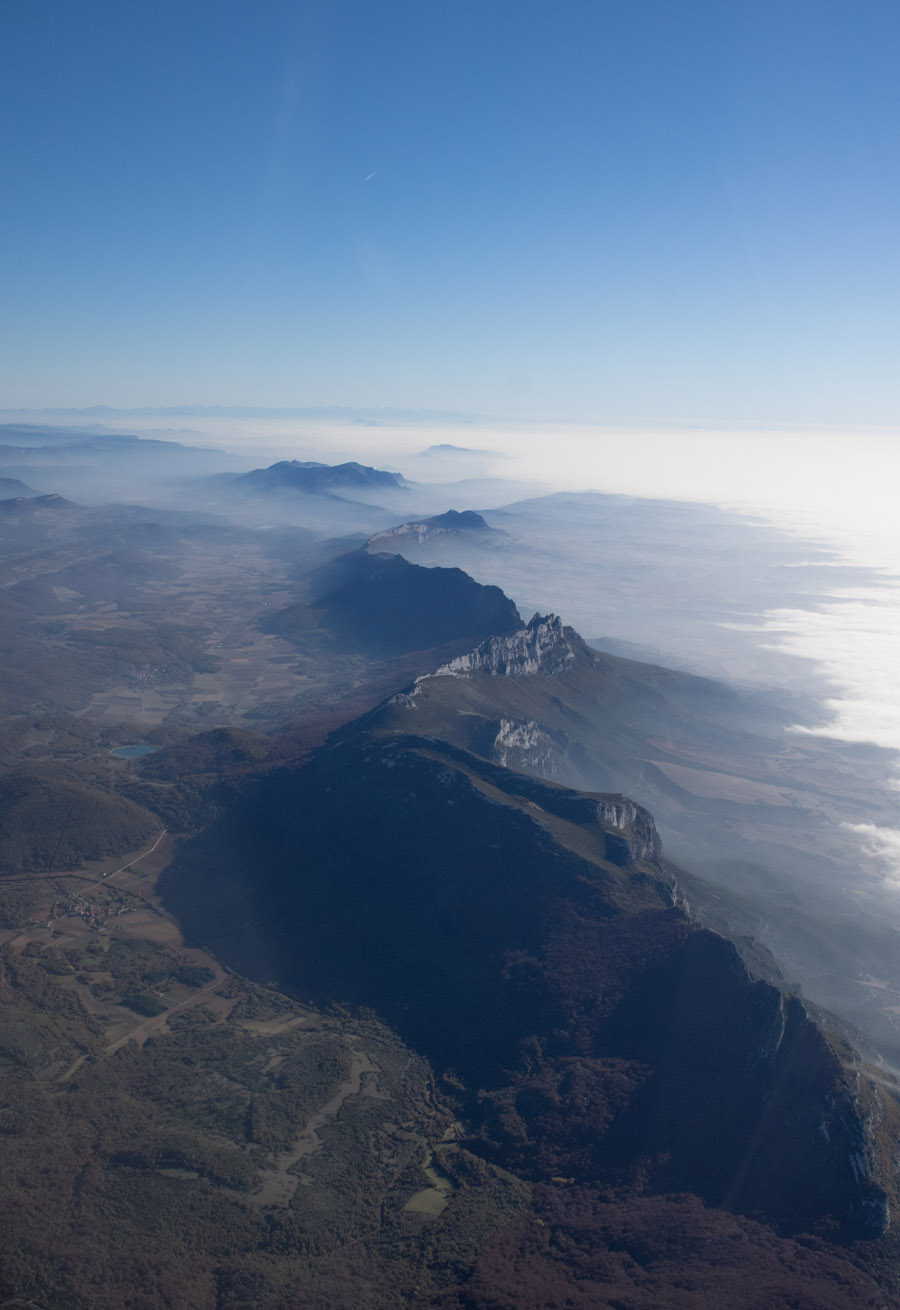
Equally spectacular haze layers. FL090
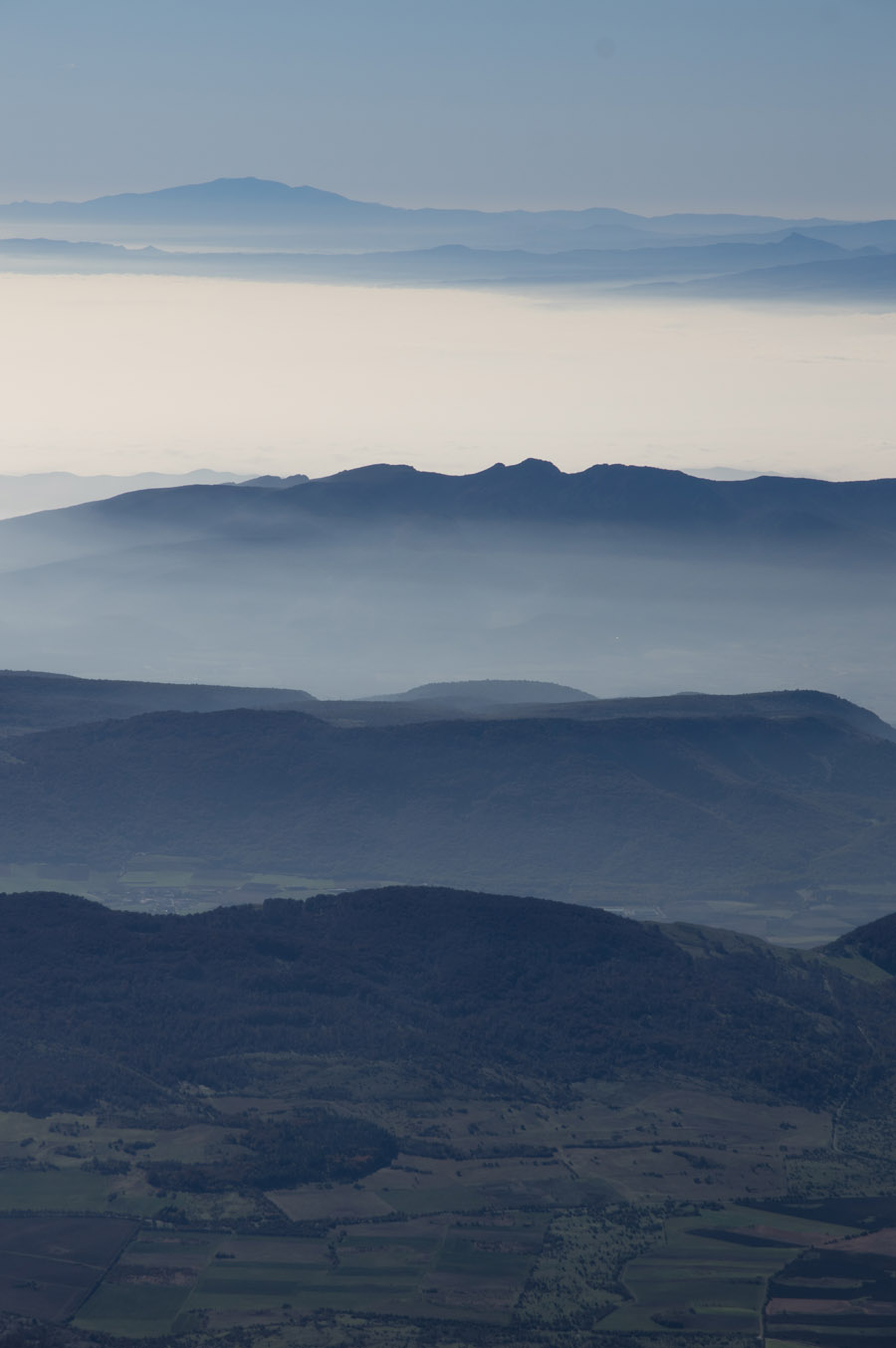
When crossing mountains above an overcast I run a topo map on a tablet so I
know where to glide to in the event of an engine failure. The Alps have plenty
of canyons and valleys and provided one is flying at least several thousand
feet above the terrain one should be able to glide into one of these, perhaps
90% of the time ![]()
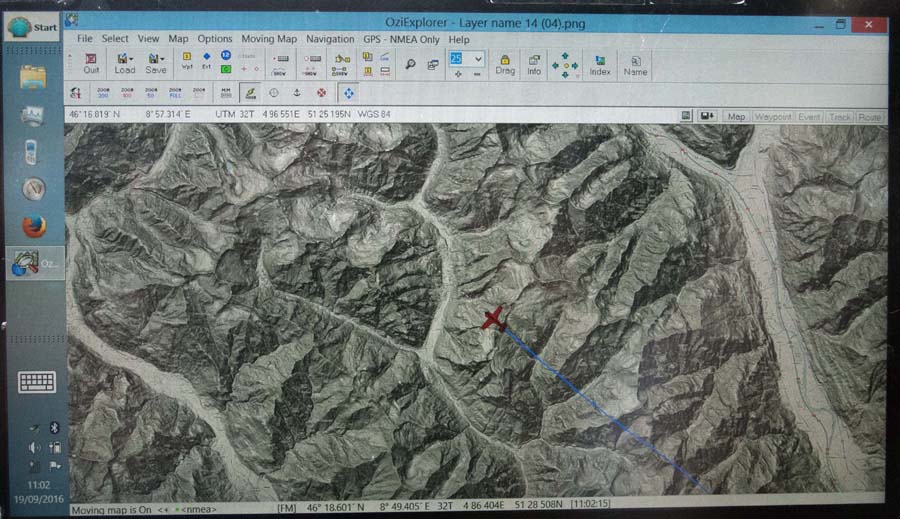
But the Pyrenees are different... in this case we were crossing them at one end where there were many landing opportunities, but one would not have those if crossing in the middle - example.
San Sebastian and the airport
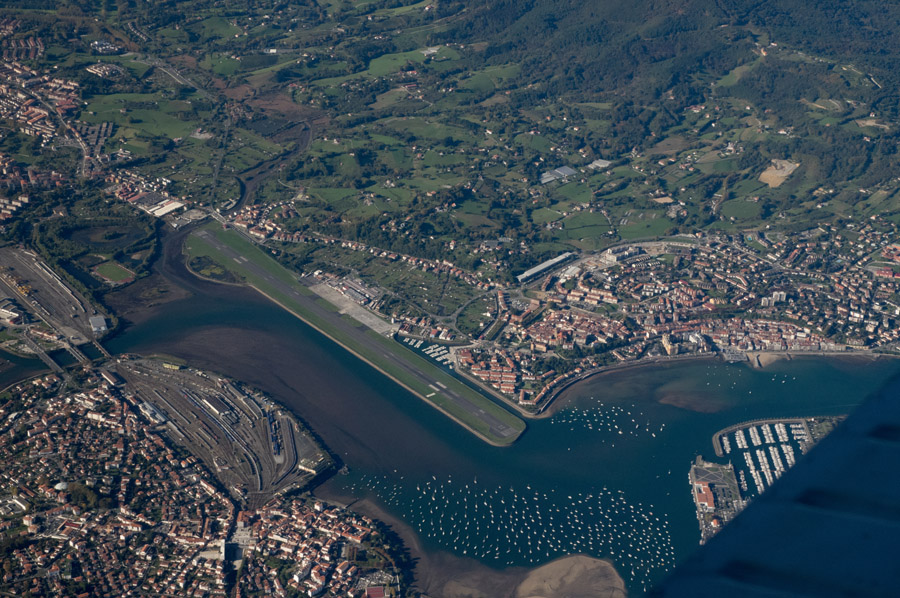
Ile d’Aix, near La Rochelle
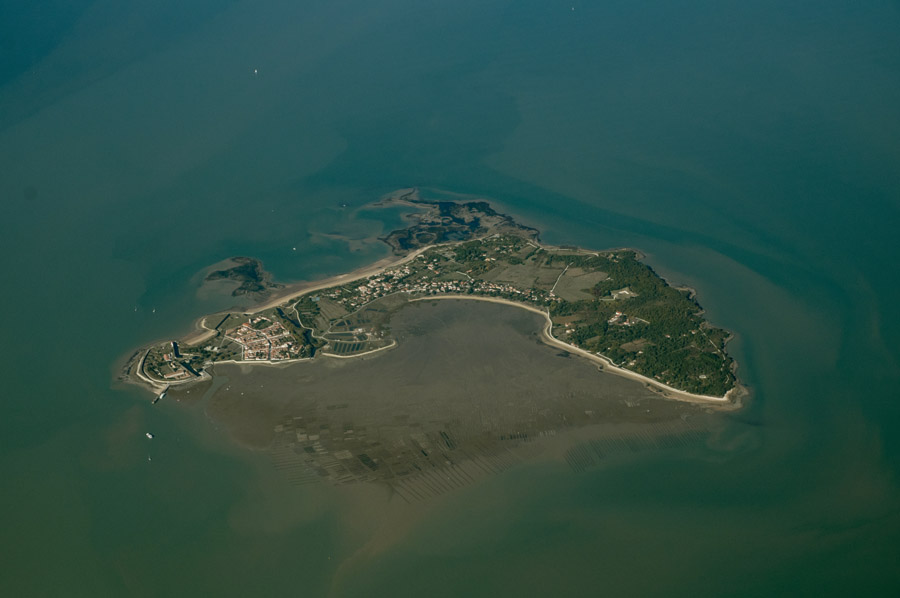
The N French coast - nearly home
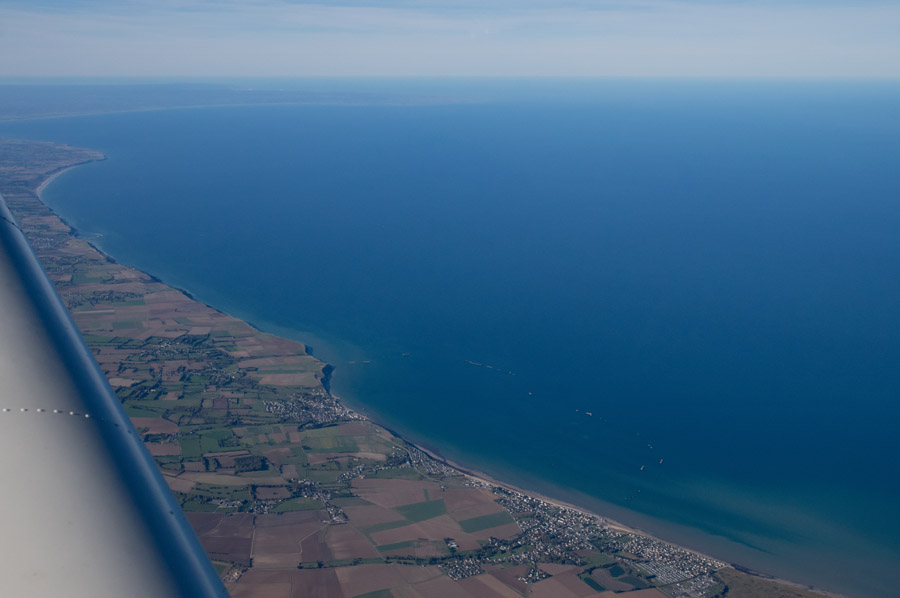
Here is a Burgos-Shoreham video. Due to a problem with the camera, the battery ran out after about 2 hours, so the video goes from Burgos to around halfway up France:
There were some spectacular temperature inversions. On the return flight, it was 0C upon arrival to the aircraft, +8C at the runway holding point an hour later, and +18C minutes later, at something like FL60-80. That was in totally clear air too, over Spain. At FL090 it was +10C in SW France, reducing to +9C near the UK.
Actual tracks flown:
Shoreham-Burgos
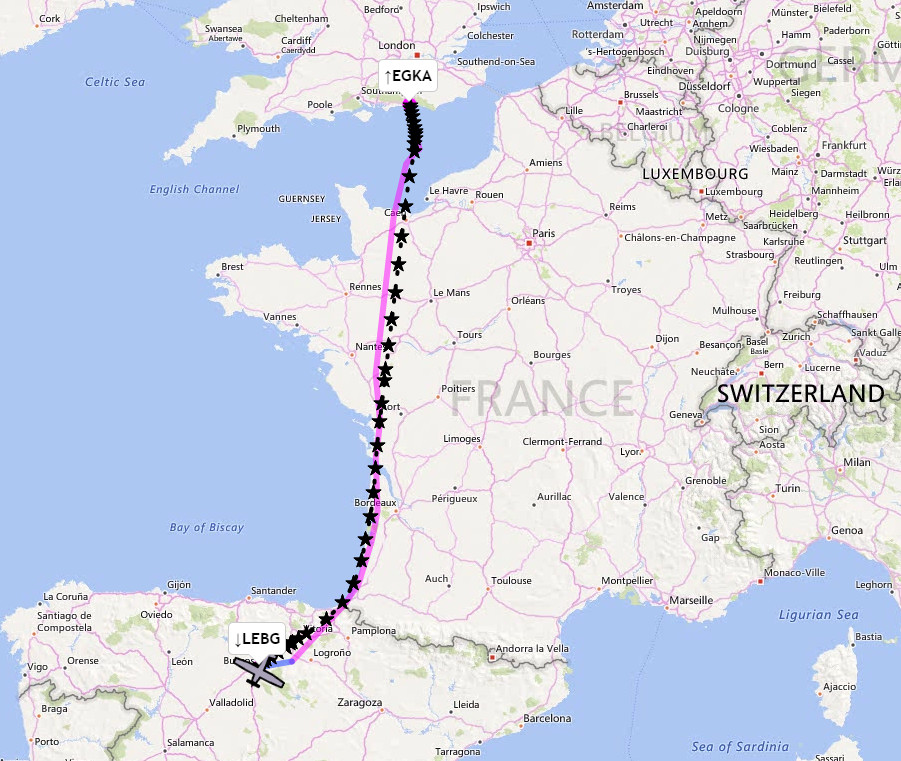
Burgos-Shoreham
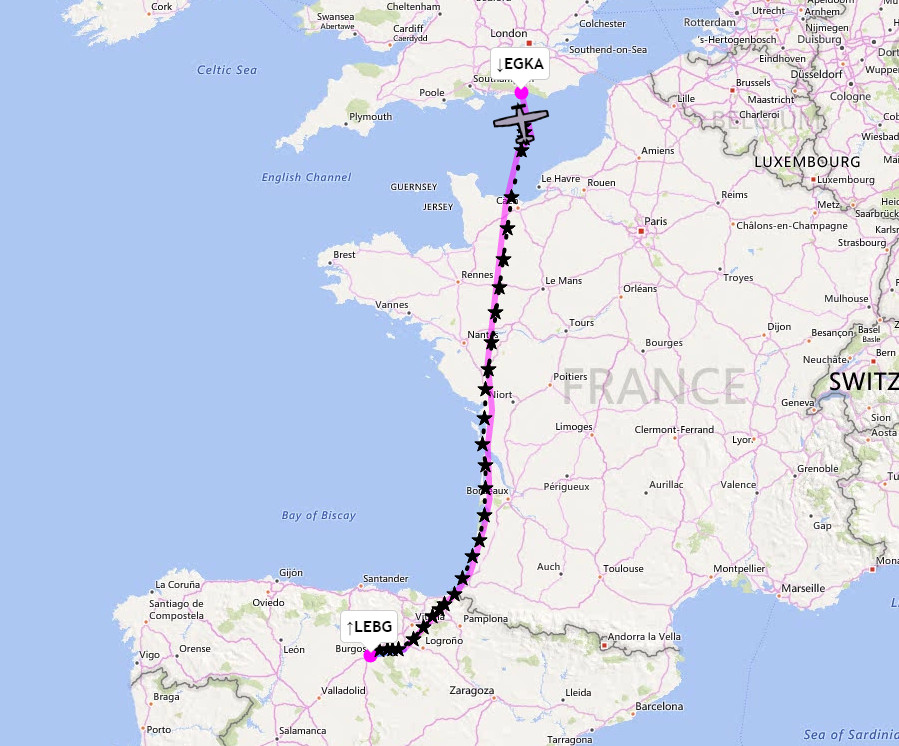
Airport costs (including VAT) for TB20, 1400kg MTOW
LEBG
Landing: €5.75
Parking: €45 (3 nights)
Handling: €0
Others: €5 (air traffic / met services)
Total €66.83 including VAT.
Avgas: receipt lost
Oxygen
An oxygen system is practically necessary for IFR in the Eurocontrol system. Occassionally, the weather is nice and one can fly at FL090 or so but most people would still get tired after several hours. Also many routings are not available below oxygen levels, due to controlled airspace structures, and in some cases terrain.
Very little oxygen was used here - probably 25% of the 48 cu. ft. cylinder, for 2 persons on the 2 flights. But without oxygen I would have not done the trip because one cuts off half of the aircraft operating ceiling and in the wrong conditions could spend most of the flight in icing conditions and turbulence. In this case the weather looked good but one can never be entirely sure, especially for the return flight 3 days later.
The Value of an IR
In this unusual case, both of the two flights could have been done legally under VFR. However, the day after our return flight the weather was very much IFR: EGKA 011420Z 02010KT 4000 HZ BKN006 12/10 Q1022
Photos Galleries
For the photo galleries I have for many years used the feature in Photoshop,
which works well enough. The galleries in this report were generated with Juicebox
which has a free version with various limits (e.g. up to 50 photos) and a $45
version which does everything. It runs on Adobe Air and seems to have issues
with large galleries on a win7 64bit machine so I run it in a winXP compatibility
mode ![]() It delivers good
results but has some annoying features e.g. stripping off EXIF data, which should
arguably be preserved, or at least be configurable.
It delivers good
results but has some annoying features e.g. stripping off EXIF data, which should
arguably be preserved, or at least be configurable.
Gadgets
No trip report can be complete without this bit ![]()
The flying video was taken with an externally mounted Sony FDR-X1000V camera, at 1080P (full HD) 50 frames/sec and with a video bandwidth of 25 megabits/sec. The result is a high quality video but due to the size (about 10GB per hour) it cannot be hosted on any reasonably priced commercial video hosting site. I also cannot host them on the server used for peter2000.co.uk because of the limited storage allowance. So I use Vimeo and pay them $60/year to give me a 5GB/week upload budget (which is wasted most of the year) but they still downsample the video to around 5 megabits/sec. The result is pretty good but if you want to see the original file there is a Download option on Vimeo. You will need a fast PC to play it however... In case you ask "why not 4K"... well, 4K generates about 100 megabits/sec, is more difficult to edit, stabilised 4K cameras are only just appearing, there is no way to host it online without reducing the quality to something like 1080P, and only a top-end PC with a top-end graphics subsystem can play 4K at 100mbits/sec.
The photos were shot with a mixture of Samsung S7 phone, a Pentax K3 camera with a 16-85 lens, and my son's Sony A7 II camera. I have since upgraded the K3 to the full-frame Pentax K1 which is really outstanding especially with the 24-70 f2.8 lens, but cameras grow in size and weight with every version and this combination now weighs in at 1.8kg!
The Pentax photos were taken from the camera in DNG raw (the camera takes jpegs to one SD card and raw to a second SD card) and processed in Lightroom to crop and remove some haze. The other program I use instead of Lightroom is ACDSEE PRO which is easier to use in the way it can be used on any randomly chosen picture folder (whereas the Lightroom workflow is a lot more formal) but most professionals use Lightroom and once you are working on a project comprising of say 100 photos it just works better. All these programs try to impose various weird workflows which are counter-intuitive unless you work in just the way they want you to... I went on a 2-day Lightroom course and didn't get very much from it.
In theory one could do everything needed on a trip with just the Samsung S7 phone. It can be used to get weather, file flight plans, and do all the normal comms with other people. It can even take fairly "ok" photos. I have the Samsung Galaxy T700 8.4" tablet which works really well. It is functionally practically identical to an Ipad (which I have too, kicking around the house) but is much better for a "power user" because it isn't as restricted as an Ipad. For example it can be expanded with a micro-SD card; say another 64GB. Apple have never allowed any such storage expansion. The tablet also tethers perfectly to the S7 phone for internet connectivity. There is a version of this tablet (the T705, which is the one I have) which takes a SIM card but that is yet another SIM account which needs to be taken care of...
However, I have found that the main thing which a tablet does better the S7 phone is in offering a bigger keyboard. In the end, one cannot beat a proper laptop for sheer productivity, and I use a Lenovo X230-I7 which is does basically everything anyone could ever need and with the I7 processor is very fast - fast enough for movie editing/rendering and faster than most of today's ~3GHz desktop computers. The X230 is now obsolete and has been replaced by the X240-I7, and various versions of these excellent, very fast and well built laptops come up on Ebay in as-new condition, for peanuts.
In the aircraft I run a Lenovo T2 10" tablet with Windows 8 and this runs everything needed. It could be replaced with an Android tablet but it is very fast in rendering PDFs (terminal charts, etc) and runs Oziexplorer which I use for VFR charts and the topo maps shown earlier in this article. It is also really solidly made. The current version of it is here.
Flight times (airborne times)
EGKA-LEBG 4:15
LEBG-EGKA 4:10
I would like to thank all those who made the fly-in.
This page last edited 15th April 2017